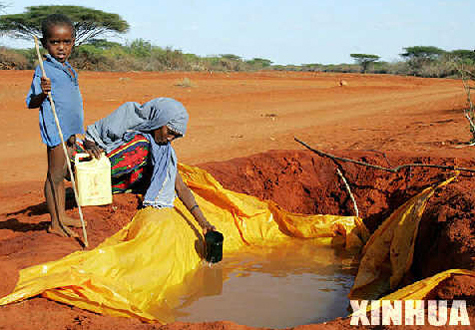A Chinese expert said Friday he hoped more African countries could tackle water shortages in the future with the help from China.
Li Yuanhong, president of Gansu Provincial Water Conservation Research Institute, said his organization had offered consulting services and helped design and build water storage and purification facilities in several countries including Nigeria, Algeria and Niger.
 |
|
A mother and her son try to get water from a ditch on a roadside in Kenya on January 11, 2006. The east part of Africa was hit by severe drought in January-April 2006, resulting in shortage total crop failure, death of livestock and shortage of drinking water. |
Li's institute is helping to carry out an ongoing training program in northwest China's Gansu Province for rainwater-harvesting technologies for seven African countries.
Nineteen government officials and engineers from Kenya, Tanzania, Zambia, Uganda, Burundi, Rwanda and South Africa are attending the two-week training program that opened Monday in Lanzhou, capital of Gansu.
With sponsorship from China's Ministry of Science and Technology and the United Nations Environment Program (UNEP), the training program is a part of the "Rainwater harvesting technology in Africa" program, one of the four programs included in the China-UNEP memorandum on African environmental technologies signed last year, according to Li.
After a three-day seminar, the trainees visited Daping Village of the arid, mountainous city Dingxi Thursday for a field study trip.
Bob Muzyamba, Secretary General of Zambia's Rainwater Harvesting Association, said his country was hoping to promote rainwater-harvesting technologies, especially in its arid south.
"We did start doing some demonstrations of rainwater harvesting, and the concept itself is growing," he said.
Gansu Province, one of the driest Chinese provinces, reports an annual precipitation of about 300 mm. It began collecting rainwater for irrigation purposes in the 1980s.
The province has so far trained more than 200 rainwater-harvesting engineers from more than 70 countries.
(Xinhua News Agency May 16, 2009)